Five years ago, a runway show in Milan featured 12 models. All of them were under 22, wore size 0, and had the same cheekbones. Today, that same show would include a model in a wheelchair, a trans woman in her 40s, a woman with vitiligo, and a plus-size model who runs her own small business. The fashion industry didn’t just change-it cracked open. And the new generation of fashion models didn’t wait for permission. They walked in anyway.
They’re Not Just Models Anymore
Today’s top fashion models aren’t just posing in designer clothes. They’re activists, entrepreneurs, writers, and community leaders. Many of them started on Instagram not because they wanted fame, but because they were tired of being told they didn’t belong. A model named Naima Jeffery, who has Down syndrome, landed her first campaign with a major British brand in 2023. She didn’t audition. She posted a photo of herself wearing a coat from a thrift store, captioned: "This is what normal looks like." The brand reached out two days later.
These models don’t just represent diversity-they redefine it. They’re not tokens. They’re not "inspirational stories" for a magazine feature. They’re the faces of campaigns, the voices behind brand decisions, and sometimes, the owners of the companies they work with. In 2024, 38% of models booked for London Fashion Week had visible disabilities, non-binary identities, or were over 35. That’s up from 6% in 2019.
What They’re Fighting Against
The old model standard was simple: thin, young, white, and silent. If you didn’t fit, you didn’t work. That system wasn’t just outdated-it was cruel. Models were starved, pushed into eating disorders, and told their bodies were "flaws" to be fixed. The new generation didn’t just reject that. They named it.
Models like Paloma Elsesser and Aaron Philip have spoken openly about being turned down for jobs because they were "too curvy" or "too disabled." They didn’t disappear. They built their own networks. They hired photographers who understood their bodies. They started hashtags like #NoMoreTinyWaists and #DisabledAndProud. And slowly, brands started listening-not because they were guilted, but because these models proved there was money in inclusion.
When Savage X Fenty launched its 2024 collection, it didn’t just feature 70 models of different sizes, skin tones, and abilities. It paid them all the same rate. No tiered pay based on "marketability." No hidden clauses about "ideal proportions." That kind of policy didn’t come from corporate CSR reports. It came from models demanding it.
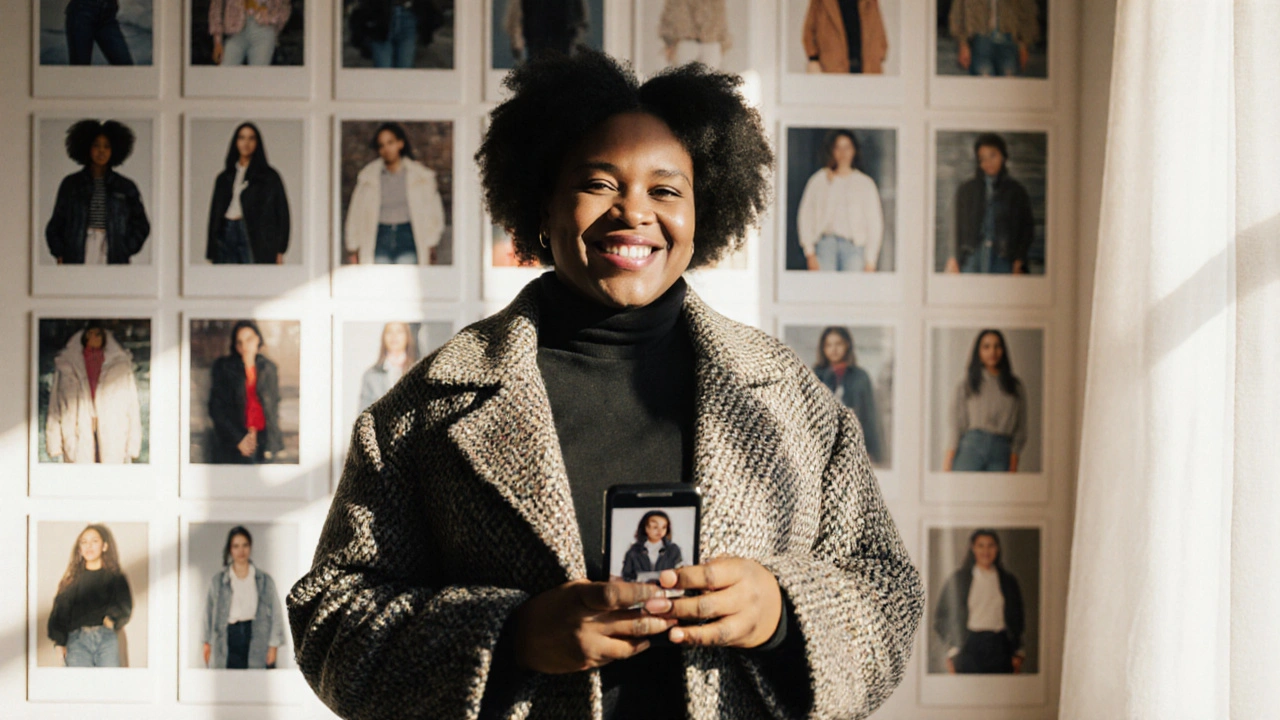
The Rise of the Non-Traditional
Forget the 5’10” size 2. The new standard is authenticity. A 58-year-old model with gray hair and stretch marks just closed a show for a luxury Italian brand. A non-binary model with a cochlear implant walked for a high-end streetwear label in Paris. A model with albinism was the face of a global sunscreen campaign.
These aren’t gimmicks. They’re responses to real consumer demand. A 2025 survey by the Fashion Transparency Index found that 67% of shoppers under 30 say they’ll stop buying from brands that don’t represent diverse bodies. That’s not a trend. That’s a market shift.
Agencies that still push for the same narrow look are losing clients. One London-based agency, known for decades for its "perfect models," lost 40% of its bookings in 2024 after refusing to cast a model with a prosthetic leg. The client? A major UK retailer that now works exclusively with a smaller, more inclusive agency.
They’re Changing How Fashion Is Made
It’s not just about who walks the runway. It’s about who’s in the room when the clothes are designed. New models are sitting on design teams. They’re pushing for adaptive clothing-zippers that open sideways, magnetic buttons, fabrics that stretch over mobility aids. They’re asking for extended sizing that doesn’t just add inches but redesigns the cut for different body shapes.
One model, Rhea Patel, who has scoliosis, worked with a denim brand to redesign their jeans. The old version pulled awkwardly across her back. The new version? It has a curved seam that follows the natural angle of a curved spine. That design is now in their best-selling line.
These aren’t small tweaks. They’re systemic changes. And they’re happening because models are no longer just the end product. They’re part of the process.
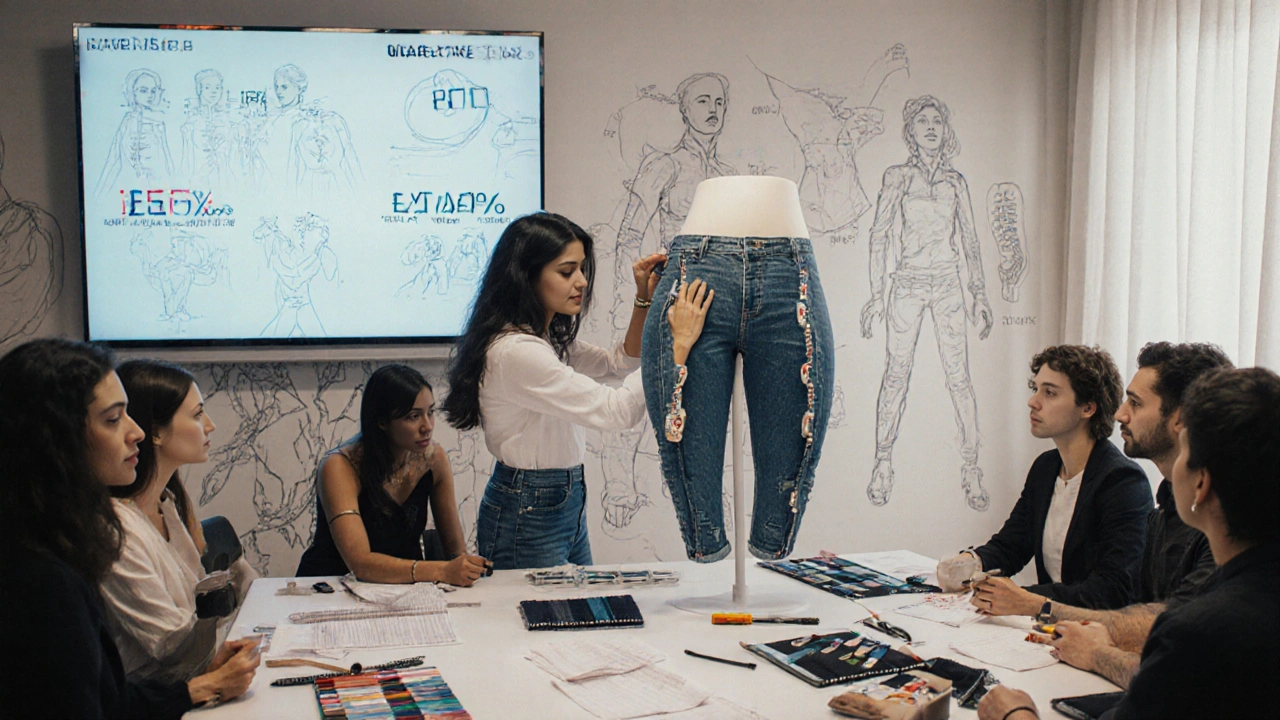
What This Means for the Future
The next generation won’t be defined by their measurements. They’ll be defined by their impact. Brands that survive will be the ones that treat models as collaborators, not mannequins. The future of fashion isn’t about who looks the most "ideal." It’s about who feels the most seen.
Look at the data: In 2025, 72% of fashion brands that launched inclusive campaigns saw a 20%+ increase in customer retention. The models didn’t just bring visibility-they brought loyalty. People don’t buy clothes because they look perfect. They buy them because they feel understood.
And that’s the real shift. The new fashion models aren’t asking to be accepted. They’re asking to be centered. And the industry? It’s finally catching up.
What’s Next for Aspiring Models
If you’re thinking about modeling today, here’s the truth: You don’t need to fit a mold. You need to know your worth. Agencies that still demand 32-24-34 measurements are relics. The ones thriving now are looking for personality, confidence, and a story.
Build your own portfolio. Shoot with photographers who respect your body. Use social media to show your truth-not a filtered version. The brands that want you won’t care if you’re 5’2” or 5’11”. They’ll care if you show up as yourself.
And if you’re rejected? That’s not your failure. It’s theirs.
Are traditional modeling standards completely gone?
No, they’re not gone everywhere-but they’re no longer dominant. Major fashion capitals like London, New York, and Paris now prioritize diversity in their official show lineups. But some niche markets, especially in fast fashion and advertising, still cling to old norms. The difference? Consumers now notice-and they vote with their wallets.
Can someone with no experience become a model today?
Absolutely. Many new models started with just a smartphone and a few photos. What matters now is authenticity, not pedigree. Brands are actively seeking people who haven’t been "trained" by agencies because they bring real, unfiltered energy. Look for open casting calls from inclusive brands. Don’t wait for permission-create your own opportunity.
Do these new models get paid the same as traditional models?
It’s improving, but not equal yet. Top-tier models with large followings earn similar rates regardless of body type. However, in lower-budget campaigns, pay disparities still exist. The push for pay equity is growing, led by unions like the Model Alliance and campaigns like #PayEquityInModeling. Always negotiate. Your value isn’t tied to your size or age.
How do I find agencies that support diversity?
Start by researching agencies that have worked with models who have visible disabilities, non-binary identities, or are over 30. Look at their recent campaigns. If all their models look the same, walk away. Reach out to models you admire and ask who represented them. Many now list their agencies publicly. Also check out organizations like The Model Alliance and Models of Diversity-they vet agencies for ethical practices.
Is this movement just a trend?
No. This isn’t a trend-it’s a correction. The fashion industry spent decades excluding most people and pretending it was normal. Now, consumers are demanding representation because they’re tired of being ignored. Sales data, social media engagement, and customer feedback all prove this isn’t temporary. Brands that ignore it will fade. Those that embrace it will lead.
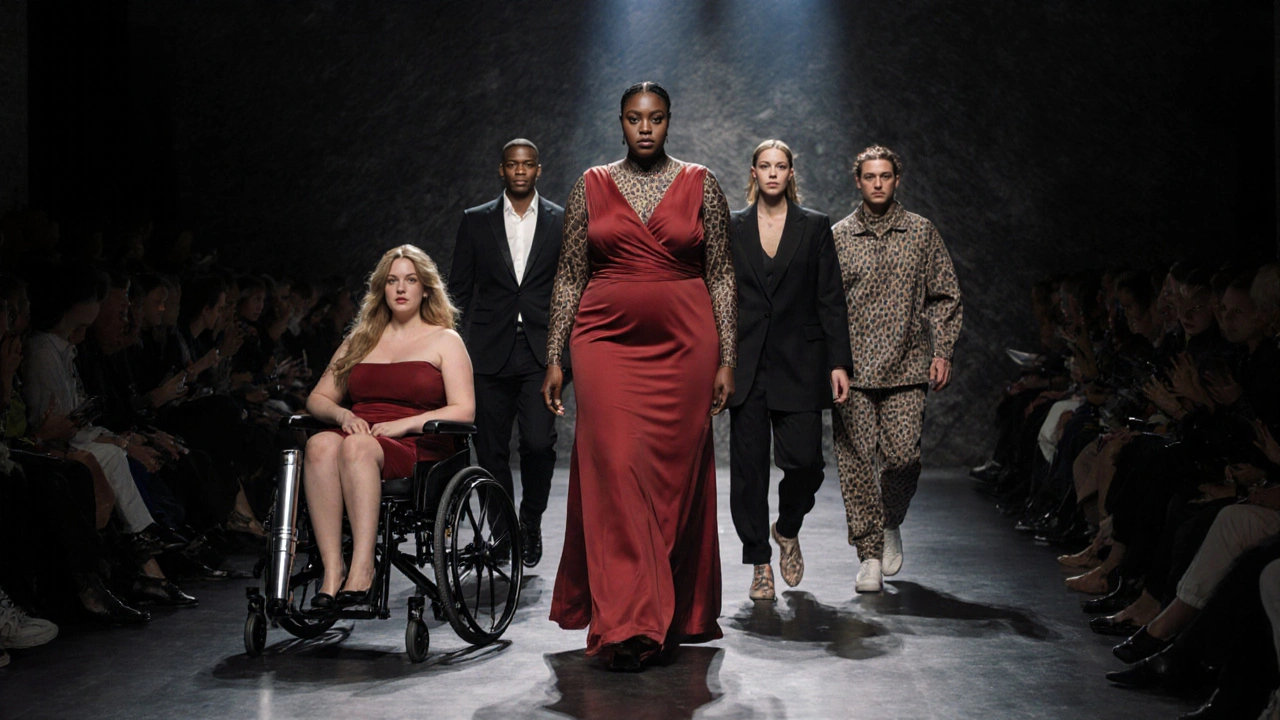



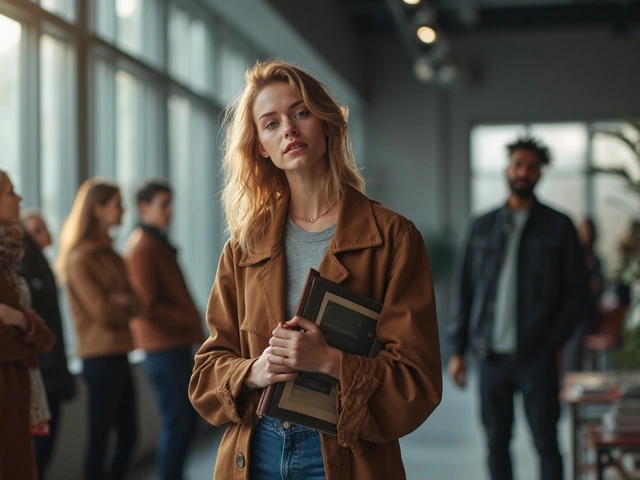

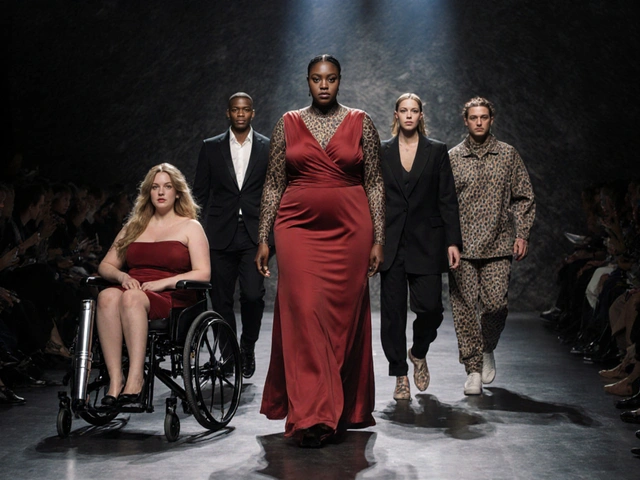
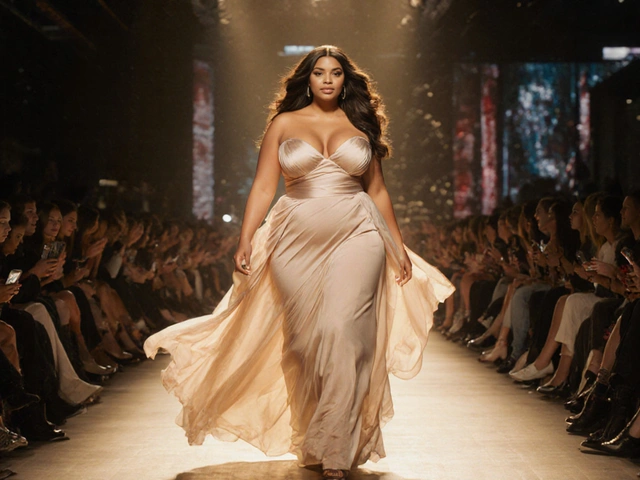
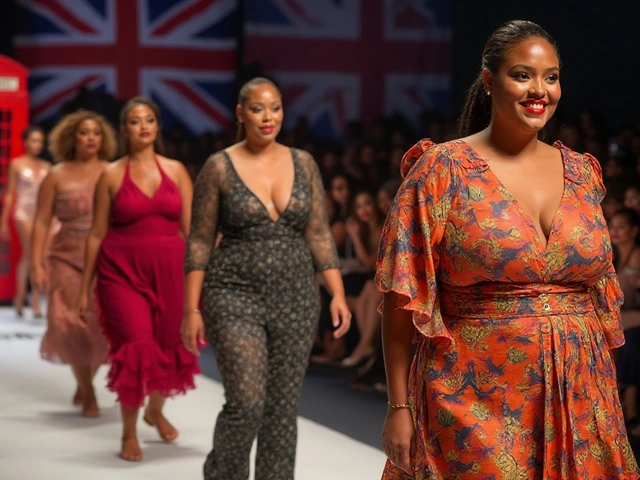
November 3, 2025 AT 17:26
Ronnie Ryan
Look, i dont care if your skin glows like a neon sign or your spine curves like a question mark-this isnt about aesthetics anymore. Its about power. The industry spent 70 years telling us beauty was a single face, and now that face has 70 different skin tones, 30 different wheelchairs, and a voice that refuses to whisper. They called it a trend. They were wrong. This is the sound of a system collapsing under the weight of its own lies. And honestly? Good.
November 5, 2025 AT 07:28
Gerardo Pineda
Wow. This made me cry in my coffee. 🥹 Seriously though-thank you for writing this. I’ve been telling my niece for years that she doesn’t need to shrink herself to fit into a world that was never made for her. Now, at least, the world is finally trying to grow bigger. Keep going, models. You’re not just walking runways-you’re rebuilding the foundation.
November 5, 2025 AT 12:48
Aditya Sinha
yo i just saw a girl with albinism on a billboard for sunscreen and i was like… wait this is real?? i mean i used to think models were just photoshop ghosts but now i see people who actually live and breathe and have stretch marks and cochlear implants?? mind blown. this is the future and i’m here for it 🙌
November 7, 2025 AT 12:38
Bethany Wappler
Let me say this plainly: the old model standard wasn’t just exclusionary-it was violent. Starving girls to fit a size zero wasn’t fashion. It was psychological warfare disguised as art. And now? We’re seeing models not just survive, but redesign the entire structure-from adaptive zippers to pay equity to refusing to be tokenized. This isn’t performative inclusion. This is structural rebellion. And if you’re still clinging to the idea that beauty has one shape, you’re not just behind the times-you’re actively resisting human dignity. I’m proud of every model who walked in without permission. You didn’t just change fashion. You changed what it means to be seen.
November 7, 2025 AT 21:53
Vinayak Agrawal
This is the revolution we needed. No more waiting for someone to hand you a spotlight. You make your own. Shoot your own photos. Post your own truth. Brands are chasing you now-not the other way around. If you’re reading this and thinking ‘I’m not enough’-you’re already more than enough. Get up. Grab your phone. And walk.
November 8, 2025 AT 11:48
Sana Siddiqi
Oh sweet mercy, the fashion gods finally got a brain transplant. 🙄 I mean, it took long enough. We had to wait for a global pandemic, a generation of teens with TikTok and zero patience, and a bunch of women with stretch marks and prosthetics to say ‘nah, I’m not dying for your runway’ before the industry decided ‘maybe diversity sells?’ Newsflash: it’s not charity. It’s capitalism. And guess what? The market’s got better taste than your 1998 Vogue cover. Now if you’ll excuse me, I’m going to buy jeans with curved seams and a side-zipper and thank Rhea Patel for making my back stop screaming.